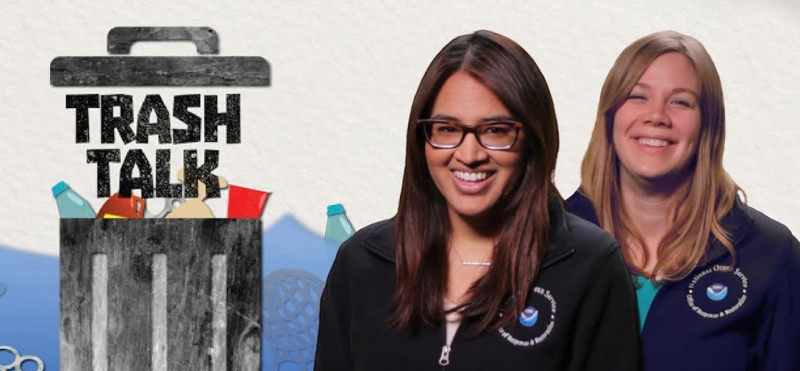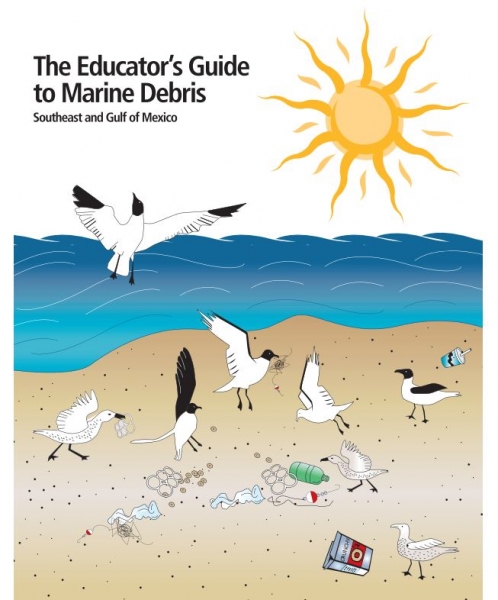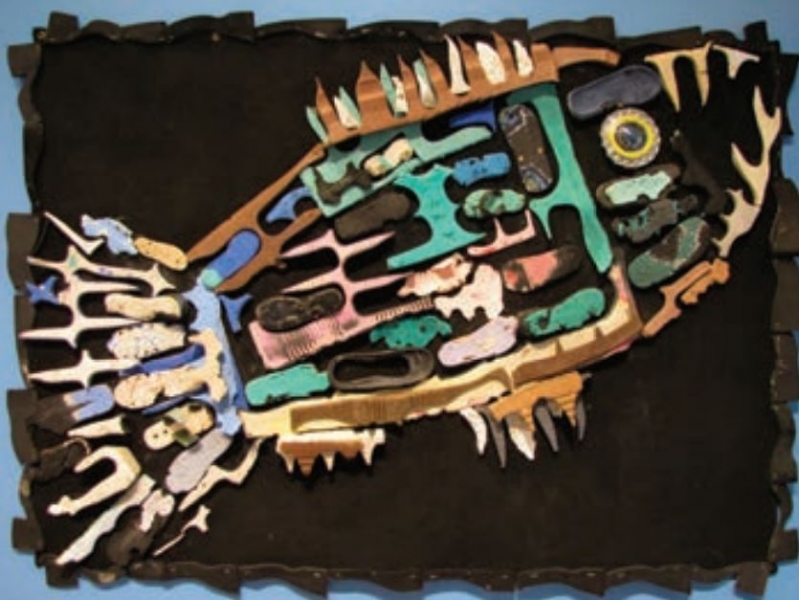At the NOAA Marine Debris Program (MDP), we are often asked, “What can we do to help clean up the ocean?” Prevention is key to solving the marine debris problem over time. If you think about an overflowing sink, the first step before cleaning up the water is to turn off the tap. However, in order to prevent marine debris, we need to understand where it is coming from and that understanding starts with a solid marine debris educational foundation.
In an ever-changing world, it's more important than ever that youth are prepared to use knowledge and skills to solve problems such as marine debris, make sense of information, and know how to gather and evaluate evidence to make decisions. Students develop these skills in engaging in science, technology, engineering and math—disciplines collectively known as STEM. STEM and STEAM (which includes Art) principles can help students to better understand and prevent marine debris, and the MDP provides great lessons for students of all ages to achieve that goal.

Science
The MDP partnered with Ocean Today to create a Regional Emmy Award-winning video called Trash Talk. The video is a 15-minute special feature on marine debris and includes topics such as “What is Marine Debris?” and “What can We do about Marine Debris?”. There is also a TRASH TALK Webinar for Educators which provides fun activities that can be used after showing the film! It's a perfect tool for museums, zoos, aquariums, learning centers, and schools. Each video provides science-based information and can be downloaded here.

Technology
The Turning the Tide on Trash curriculum was originally developed in 1992 for the U.S. Environmental Protection Agency and revised in 2012 with support from the NOAA Marine Debris Program and partners. On page 87, Communicating for a Clean Future, teachers will introduce students to the concept of public education and then use technology to distribute those materials in order to raise the school’s or community’s awareness of the marine debris problem. The students will research, write, and create materials to educate the community about marine debris – its sources, impacts, and solutions. Students will share their research by creating a web site, newspaper, podcast, or television show. Download the curriculum here.

Engineering
In collaboration with Oregon State University, a comprehensive, web-based marine debris curriculum was created that touches on all aspects of STEM and STEAM. In the lesson “Ocean’s Deadliest Catch”, students will engineer and use drifters (scientific equipment used to collect data on the ocean’s surface) to demonstrate how trash found in inland waterways can move through the watershed and become marine debris. Download the drifter activity here.
Art
Washed Ashore is a non-profit organization that builds and exhibits aesthetically powerful art to educate a global audience about plastic pollution in the ocean. Through a MDP Prevention Grant, Washed Ashore developed an integrated arts marine debris curriculum to educate students, grades 5-8, about marine debris. Through presentations and hands-on classroom activities using the language of the arts, the curriculum educates students about marine debris, plastic use in our society, and how to prevent marine debris both individually and as a community. In lesson five, “Roughing It”, students will demonstrate how marine debris can be used to create art and communicate to new audiences. The complete lesson plan and webinar can be downloaded here.

Mathematics
The Marine Debris Monitoring Toolkit for Educators was created through a collaboration between MDP and the NOAA Office of National Marine Sanctuaries. This toolkit provides many resources and adapts the MDP's Marine Debris Monitoring and Assessment Project (MDMAP), a robust citizen science monitoring initiative, for classroom use. Using the Toolkit, students conduct marine debris surveys, which can help to provide valuable information on where, when, and what kind of debris is showing up along our waterways. Students can enter their data into a national database, analyze monitoring results, and become involved in marine debris stewardship within their communities. On page 30 of the toolkit, students will analyze their data by creating figures to determine patterns in debris, as well as better understand the sources of marine debris, such as consumer items like plastic bottles or fishing gear. Download the Toolkit here.
The Marine Debris Program is moving Full STEAM (STEM) ahead to prevent and remove marine debris. With a variety of lesson plans available online, the MDP and its many partners continue to provide the tools needed to engage and educate students about marine debris prevention. Explore our STEM/STEAM educational products online and let’s turn off the tap together.

thank you for the ideas.